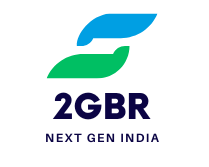What is smoke testing?
Smoke testing, also called build verification testing or confidence testing, is a software testing method that is used to determine if a new software build is ready for the next testing phase. This testing method determines if the most crucial functions of a program work but does not delve into finer details.
As a preliminary check of software, smoke testing finds basic and critical issues in an application before more in-depth testing is done. If a piece of software passes a smoke test, quality assurance teams then proceed with further testing. A failure means the software must be handed back to the development team.
The goal of smoke testing is to discover simple but severe failures using test cases that cover the most important functionalities of a software. Smoke tests are performed by QA teams using a minimal set of tests on each build that focuses on software functionality.
Without smoke testing, major issues could slip through the cracks, leaving the chance for those issues to cause larger problems down the line.
What are the different types of smoke testing?
Types of smoke testing include the following:
- Manual smoke testing. Human software testers conduct smoke tests manually. This includes manually developing and updating test cases. Test scripts are also written manually for new or existing features.
- Automated smoke testing. Software tools are used to automate the smoke testing process. Smoke testing tools make the testing process more efficient by automatically providing relevant tests.
- Hybrid smoke testing. Hybrid testing is a combination of manual and automated smoke testing, where testers write test cases and then automate the tests using a tool.
Advantages of smoke testing
Smoke testing is a valuable part of the testing process for the following reasons:
- Automation enables tests to be run faster and more often.
- Future builds are constructed on bug-free software.
- It identifies defects in early stages of development.
- It lessens risks associated with adding code to existing build integrations.
- Smoke tests can be run often due to their low resource requirements and simple process.
- There is flexibility in implementation with manual, automated and hybrid types.
- It verifies software quality early on in development, ensuring that a build is stable.
Disadvantages of smoke testing
There are some disadvantages that come with smoke testing, however, for example:
- Smoke testing doesn’t cover all functionalities in a piece of software — only specified core functionalities are tested.
- Not every bug or problem may be found with smoke tests, and some may still be found later in development.
- Manual smoke testing takes longer to complete when used in larger projects.
What is the smoke testing cycle?
The smoke testing cycle starts with a build being delivered from the development team. That build is passed for an initial smoke test by QA. Specific test cases are prioritized based on core or key features, tests are created and the software is then tested.
If the software fails the initial smoke test, the software is handed back to the development team, where it is fixed and then sent back to QA. Another set of smoke tests is performed on the software, and if it passes, the software is integrated with an existing build in the QA and staging environment. The software is now ready for more rigorous functional testing.
When we perform smoke testing
Generally, whenever the new build is installed, we will perform one round of smoke testing because in the latest build, we may encounter the blocker bug. After all, there might be some change that might have broken a major feature (fixing the bug of or adding a new feature could have affected a major portion of the original software), or we do smoke testing where the installation is happening.
When the stable build is installed anywhere (Test Server, Production Server, and User Acceptance testing), we do smoke testing to find the blocker bug.

Smoke Testing Tools
Smoke testing tools verify the stability of critical functionalities in an application. These tools offer features like automation, cross-platform compatibility, and detailed reporting to ensure faster detection of issues before further testing.
Here are the top tools for smoke testing:
1. BrowserStack
BrowserStack is a leading cloud-based testing platform that allows teams to perform automated and manual smoke tests across thousands of real devices and browsers. Its seamless integration with popular tools makes it a reliable choice for comprehensive testing.
Key Features:
- Access to over 3,500 real devices and browsers for cross-platform testing.
- Integration with Selenium, Appium, and other automation tools.
- Automated parallel testing to save time.
- Detailed logs, screenshots, and video recordings for debugging.
Pros: Easy to use, no maintenance required, and supports CI/CD pipelines.
2. Selenium
Selenium is an open-source automation tool widely used for testing web applications. It supports multiple programming languages and browsers, making it highly versatile for smoke testing.
Key Features:
- Cross-browser testing support.
- Integration with programming languages like Java, Python, and C#.
- Works seamlessly with CI/CD pipelines.
- Extensive community support and third-party libraries.
Pros: Free, flexible, and highly customizable.
Cons: Requires programming knowledge and lacks built-in reporting tools.
3. Apache JMeter
Primarily a performance testing tool, JMeter is also effective for API and functional smoke testing. It’s especially useful for testing backend systems.
Key Features:
- Load and performance testing capabilities.
- Supports multiple protocols like HTTP, HTTPS, and FTP.
- Plugin support for extended functionality.
- Ideal for API testing and backend validations.
Pros: Open-source, scalable, and supports diverse testing needs.
Cons: Steep learning curve for beginners and limited GUI functionalities.
4. TestNG
TestNG is a powerful Java-based testing framework designed for automated functional, unit, and smoke testing. It is ideal for structured testing processes.
Key Features:
- Parallel execution of test cases.
- Built-in annotations for test configuration.
- Detailed reporting with logs and metrics.
- Integration with CI/CD tools like Jenkins and Maven.
Pros: Flexible, efficient, and supports detailed reporting.
Cons: Java-specific and requires programming expertise.
Read More: How to Automate TestNG tests in Selenium
5. Postman
Postman is a popular tool for API testing, but it also serves as an efficient platform for smoke testing API endpoints and integrations.
Key Features:
- Simple API request creation and execution.
- Automated testing with scripting capabilities.
- Comprehensive reports for API responses.
- Collaboration tools for team-based testing.
Pros: User-friendly and robust for API smoke testing.
Cons: Limited functionality for UI-based testing.
These tools offer diverse capabilities, enabling effective and reliable smoke testing across web applications, APIs, and systems.

